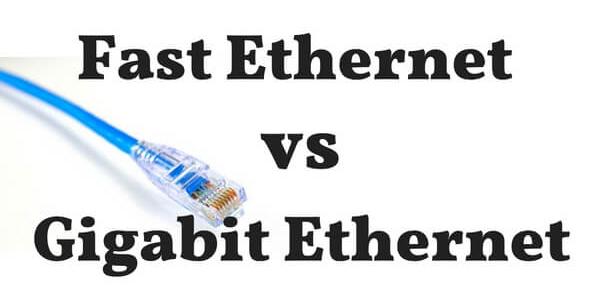- Related articles
- Optical Transceivers for Cisco WS-C2960S-48LPS-L Switch
- What is fiber optic technology used for?
- Optical Transceivers for Cisco WS-C3650-48FQ-L Switch
- What is fiber optics used for?
- Optical Transceivers for Cisco ME-3600X-24FS-M= Switch
- Optical Transceivers for Cisco ME-3400-24FS-A Switch
- What Is ADSS Optical Fiber Cable?
- Optical Transceivers for Cisco N7K-M206FQ-23L= Switch
- All Cisco GBIC-BX-U's information (Specs, Datasheet PDF, Compatibility matrix)
- What Is GJYFJCH Fiber Optic Cable?

Ethernet in computer networks refers to a collection of standards and components, which provides a media to communicate in a Local Area Network (LAN), between network devices. There are various standards developed during past decades, IEEE came with “IEEE 802.3 – Ethernet standard” under IEEE 802 protocol suite. Original Ethernet standard IEEE 802.3 supports a data rate of 10 megabits per second (Mbps).
With the development of technology, 10Mbps speed in LAN was not sufficient. IEEE improved the Ethernet to IEEE 802.3u “Fast Ethernet” standard, and later they came with IEEE 802.3z “Gigabit Ethernet” standard.

Gigabit Ethernet Card
With more improvements to the Ethernet and Fast Ethernet, IEEE announced IEEE 802.3z – Gigabit Ethernet in February 1997. Although Gigabit Ethernet uses the same CSMA/CD and Ethernet framing format, it shows significant differences like slot time. As its name implies, Gigabit Ethernet provides 1000Mbps transmission in full-duplex and half-duplex. Physical media specifications are listed below.
1000Base-SX supports duplex links up to 275 meters, use 850nm laser wavelength with fiber channel technology. This can be used only in multimode fiber with 8B/10B encoding in 1.25Gbps line.
1000Base-LX differs only from longer wavelength of 1300nm and above.
1000Base-CX and 1000Base-T uses copper cabling and distances from 25m to 100m respectively.
Difference between Fast Ethernet Card and Gigabit Ethernet Card
- Gigabit Ethernet is more advanced technology than Fast Ethernet having speed of 1000 Mbit/s, 10 times more than speed of Fast Ethernet, which is 100 Mbit/s.
- Due to more bit transfer speed and higher bandwidth, Gigabit Ethernet results in better performance than Fast Ethernet.
- Gigabit Ethernet is more expensive than Fast Ethernet. Upgrading of Fast Ethernet from Standard Ethernet is easy and cost effective while upgrading of Gigabit Ethernet from Fast Ethernet is complex and expensive.
- Configuration problems in Gigabit Ethernet are more complex than Fast Ethernet. Devices used in Gigabit Ethernet must have same configuration to function fully. While in Fast Ethernet, connected devices configure automatically with the system.
- Every network can support 100 Mbit/s but cannot support 1000 Mbit/s. So, specific network is required that can support the Gigabit Ethernet.
- Maximum length of 10 km network can be achieved in Fast Ethernet, if 100BASE-LX10 version is being used. While 70 km network length can be achieved in Gigabit Ethernet, if Single Mode Fiber (1,310 nm wavelength) is being used as a medium.
- Faster Ethernet runs on both optical fiber cable and unshielded twisted pair cable. Gigabit Ethernet runs on either 1000BASE-T twisted pair cable, 1000BASE-X optical fiber or 1000BASE-CX shielded balanced copper cable.
- Fast Ethernet is economical but provides the slow transfer speed as compared to the Gigabit Ethernet that provides the faster transfer rate but is very expensive. The ports of Gigabit Ethernet cost four times the price per port of Fast Ethernet.
- IEEE Standard for Gigabit Ethernet is IEEE 802.3-2008 and the IEEE Standards for Fast Ethernet are 802.3u-1995, 802.3u-1995 and 802.3u-1995.
- Upgrade from simple Ethernet to Fast Ethernet is relatively simple and economical as compared to the upgrade from Fast Ethernet to Gigabit Ethernet.
- Gigabit Ethernet requires specifically designed network devices that can support the standard 1000Mbps data rate. Fast Ethernet requires no specific network devices.
- Manual configuration is the must-have element in the setup of Gigabit Ethernet where most of the devices required prior configuration in order to be compatible with Gigabit Ethernet. While in Fast Ethernet there is no scene of configuration as connected devices automatically configured according to the requirement of Fast Ethernet.
- If you need the more bandwidth then Gigabit Ethernet will provide you the more bandwidth at the best possible frequency as compared to the Fast Ethernet.
- Fast Ethernet was introduced in 1995 and Gigabit Ethernet was introduced in 1999.
Summary
Ethernet is a system of LAN used to connect the multiple systems to develop a LAN (Local Area Network). Fast Ethernet and Gigabit Ethernet, both are used to accomplish this purpose. But some differences arise on the matter of coverage, speed and configuration. The purpose of this article is to educate IT professional about the fundamental differences between Fast Ethernet and Gigabit Ethernet.





































































